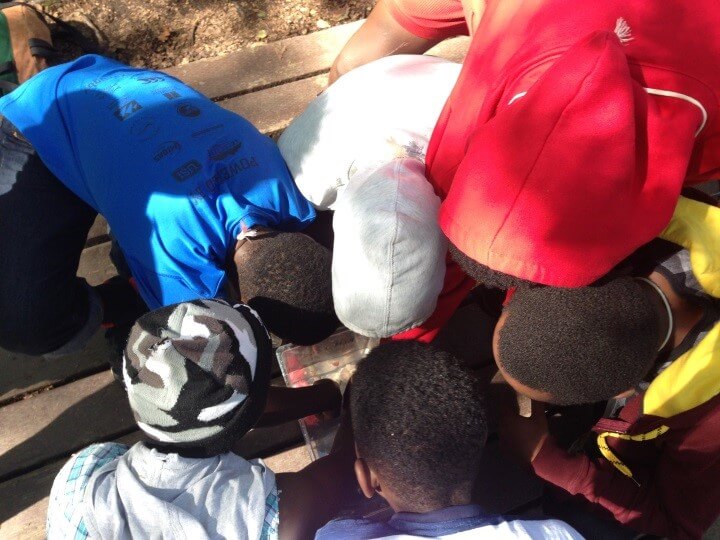Newly Arrived Refugees Explore Their Public Lands
Story by Katherine Trudeau, Student Conservation Association intern for the Bureau of Land Management
Imagine the shock of moving to a new country. Add to that an entirely new environment with animals, plants, and places you have never seen before. The Bureau of Land Management’s Campbell Creek Science Center hosted a three-day eco-explorer camp in order to help with the adjustment of 20 newly arrived refugees and immigrants. Students, primarily from the African continent, including the countries of Sudan and Rwanda, spent their time on Campbell Tract exploring a new home full of surprises and adventure.
On the first day students learned about animals they may encounter in Alaska. They were able to touch bones, teeth, and furs of lynx, fox, wolves and more. In order to understand how these animals are suited to live in Alaska they played games demonstrating adaptations. An important focus of the day was safety around moose and bears, since these students are likely to see these animals in their neighborhoods throughout the year.
 Student compares the size of her hand to that of a black bear track (Photo by Kate Trudeau)
Student compares the size of her hand to that of a black bear track (Photo by Kate Trudeau)
The second day was spent streamside as the students dove into the aquatic biology of Campbell Creek. The older students set fish traps and caught salmon fry to study with the younger children. No stone was left unturned as the students looked for macroinvertebrates, aquatic plants, trout, and salmon.
 Student sets a fish trap in Campbell Creek (Photo: Kate Trudeau)
Student sets a fish trap in Campbell Creek (Photo: Kate Trudeau)
The third day focused on plants, helping students learn which local plants were edible and which plants were toxic. Students tasted wild raspberries, smelled Labrador leaves, pressed flowers, and talked about similarities between Alaska’s plants and the plants of their home countries. After a lesson about seed propagation, students were able to transplant a flower from the Science Center Greenhouse to take home and share with their families.
 Students examine aquatic invertebrates up close (Photo: Kate Trudeau)
Students examine aquatic invertebrates up close (Photo: Kate Trudeau)
Highlights for the students included nature exploration, quiet time to journal, and the ability to play in the creek as well as the opportunity to be carefree kids.
This program was made possible by a partnership with the BLM Campbell Creek Science Center and Alaska Catholic Social Services Refugee and Immigration Services which provides aid to the 130 refugees Anchorage receives every year. Students on this trip received transportation funding from Every Kid in A Park.

